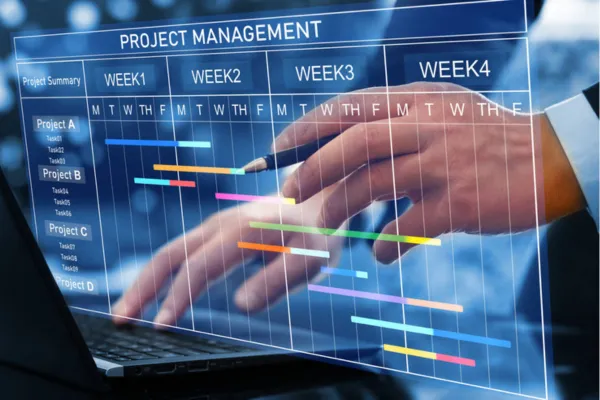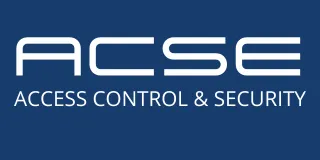
Key Project Management Skills for Successful Gate Automation Projects
In gate automation, project management is as critical as technical expertise. Delivering projects on time, within budget, and to the satisfaction of clients requires a blend of technical knowledge, organizational skills, and the ability to adapt to challenges. Whether you are working on a residential installation or a large-scale industrial project, mastering project management ensures success and builds client trust.
This article explores the key project management skills essential for gate automation professionals. These skills cover every stage of a project, from planning and execution to final delivery and client handover.
1. Strategic Planning and Scheduling
The foundation of a successful project lies in strategic planning and accurate scheduling. Gate automation projects often involve multiple components, including access control systems, gate operators, fencing, and safety features. Without a detailed plan, delays and miscommunication can derail progress.
Key Strategies:
Develop a Comprehensive Project Scope:
Clearly define the scope, including deliverables, timelines, and specific client requirements. Include safety compliance standards like UL 325 and ASTM F2200.Break the Project into Phases:
Site assessment and design.
Material procurement and installation.
Final testing and client handover.
Account for Lead Times:
Factor in time for ordering specialized equipment, obtaining permits, and resolving unexpected delays.Utilize Project Management Tools:
Platforms like Asana or Microsoft Project can help track tasks, deadlines, and team responsibilities.
2. Budgeting and Cost Management
Staying within budget is crucial for profitability and client satisfaction. Cost overruns not only damage relationships but also affect future opportunities.
Key Strategies:
Conduct Detailed Cost Estimates:
Include materials, labor, permits, and transportation.
Set aside 10-15% as a contingency fund for unforeseen expenses.
Monitor Expenses Closely:
Compare projected costs to actual spending regularly.
Use accounting software to keep track of expenditures in real-time.
Communicate Budget Adjustments Early:
If unexpected costs arise, notify clients immediately.
Offer cost-saving alternatives, such as modifying designs or selecting more affordable materials.
Negotiate with Suppliers:
Building strong relationships with suppliers can lead to discounts or favorable payment terms that keep costs down.
3. Risk Management and Problem-Solving
Every project comes with risks, but successful project managers anticipate these challenges and respond quickly to minimize disruptions.
Key Strategies:
Perform Risk Assessments:
Identify potential risks, such as adverse weather, supply chain delays, or conflicts with local codes.Create Contingency Plans:
Have backup suppliers for critical materials.
Design flexible project schedules that account for possible setbacks.
Encourage Team Accountability:
Create a culture where team members feel comfortable reporting issues immediately.Stay Calm Under Pressure:
The ability to remain composed allows you to make rational decisions when unexpected problems arise.
4. Technical Expertise and Industry Knowledge
Gate automation projects demand a thorough understanding of both technical components and industry standards.
Key Strategies:
Stay Updated on Technology Trends:
Follow advancements in gate automation, access control, and smart integration systems.Understand Product Specifications:
Familiarize yourself with the technical requirements of popular gate operators and access control systems.Prioritize Compliance:
Always adhere to UL 325 and ASTM F2200 standards.
Consult local zoning laws to avoid permit issues.
Provide Technical Oversight:
Work closely with installers to troubleshoot issues and ensure quality installation practices.Train Your Team:
Regularly update your team on new equipment and industry protocols to maintain high performance.
5. Communication and Stakeholder Management
Clear, consistent communication ensures that everyone involved in the project is on the same page. Miscommunication can lead to delays, budget overruns, and dissatisfied clients.
Key Strategies:
Establish a Communication Plan:
Schedule regular updates with stakeholders, whether weekly or biweekly.
Use reports and dashboards to provide clear progress updates.
Tailor Communication to the Audience:
Use technical language with contractors and suppliers.
Simplify terms when discussing with clients unfamiliar with the industry.
Encourage Feedback:
Actively seek input from clients to ensure the project aligns with their expectations.Resolve Disputes Effectively:
When conflicts arise, address them quickly to maintain trust and momentum.Centralize Communication:
Use tools like Slack or Microsoft Teams to ensure all project-related discussions are easily accessible to the team.
6. Leadership and Team Management
Leading a successful project requires motivating your team, delegating tasks effectively, and ensuring accountability.
Key Strategies:
Clearly Define Roles and Responsibilities:
Assign tasks based on team members’ skills and experience.
Use job descriptions to set expectations upfront.
Motivate the Team:
Recognize individual contributions during team meetings.
Celebrate milestones to boost morale.
Conduct Regular Check-Ins:
Weekly meetings can help track progress and identify any bottlenecks early.Provide Resources and Support:
Ensure that team members have access to the tools, training, and information they need to excel.Resolve Conflicts Quickly:
Address disagreements promptly to maintain productivity and cohesion.Lead by Example:
Demonstrate professionalism and commitment to inspire the same in your team.
7. Quality Assurance and Final Testing
Delivering a high-quality, compliant gate automation system ensures client satisfaction and builds your reputation.
Key Strategies:
Test the Entire System:
Conduct operational tests on all components, from gate operators to safety sensors.
Simulate real-world scenarios to confirm functionality under various conditions.
Document Compliance:
Record test results to show adherence to UL 325 and ASTM F2200 standards.
Provide clients with detailed reports for their records.
Perform a Client Walkthrough:
Explain system features and demonstrate how to operate the gate safely.
Address client questions or concerns before project handover.
Prepare Maintenance Schedules:
Include timelines for servicing components to ensure long-term reliability.
8. Post-Project Support and Follow-Up
A project doesn’t end when the gate is installed. Providing ongoing support builds trust and encourages repeat business.
Key Strategies:
Offer Maintenance Packages:
Include options for regular inspections, cleaning, and system updates.Follow Up After Completion:
Contact clients a few weeks post-installation to confirm satisfaction.
Use their feedback to improve your future processes.
Request Testimonials and Referrals:
Happy clients are your best marketing tool. Encourage them to leave reviews or recommend your services.Provide Long-Term Support:
Offer a hotline or email for troubleshooting and minor issues.
Conclusion
Managing gate automation projects effectively requires a unique combination of technical expertise, organizational skills, and leadership. From planning and budgeting to quality assurance and follow-up, every phase of the project demands attention to detail and proactive management.
By mastering these project management skills, you can ensure smooth execution, exceed client expectations, and build a strong reputation in the competitive gate automation industry.

